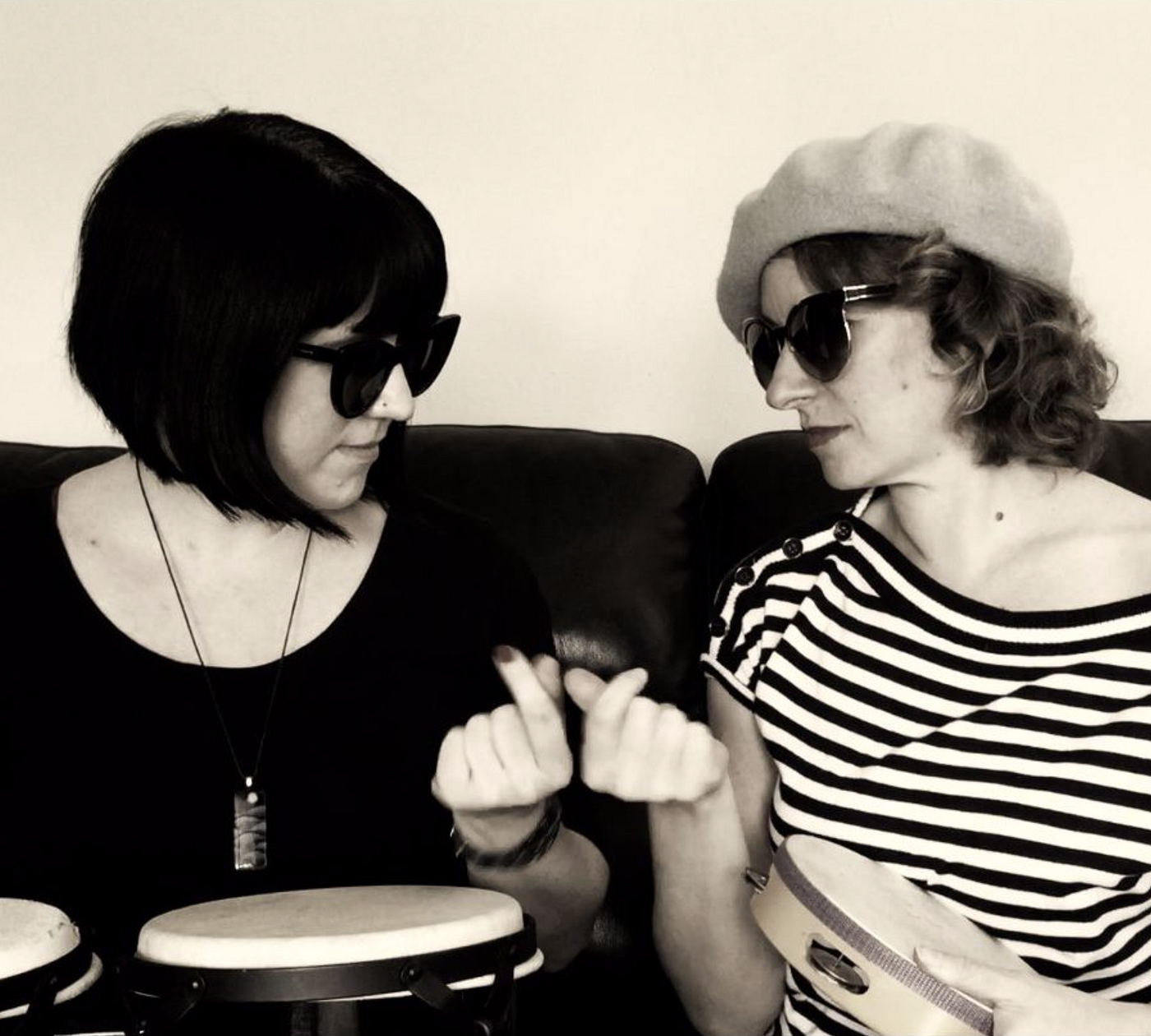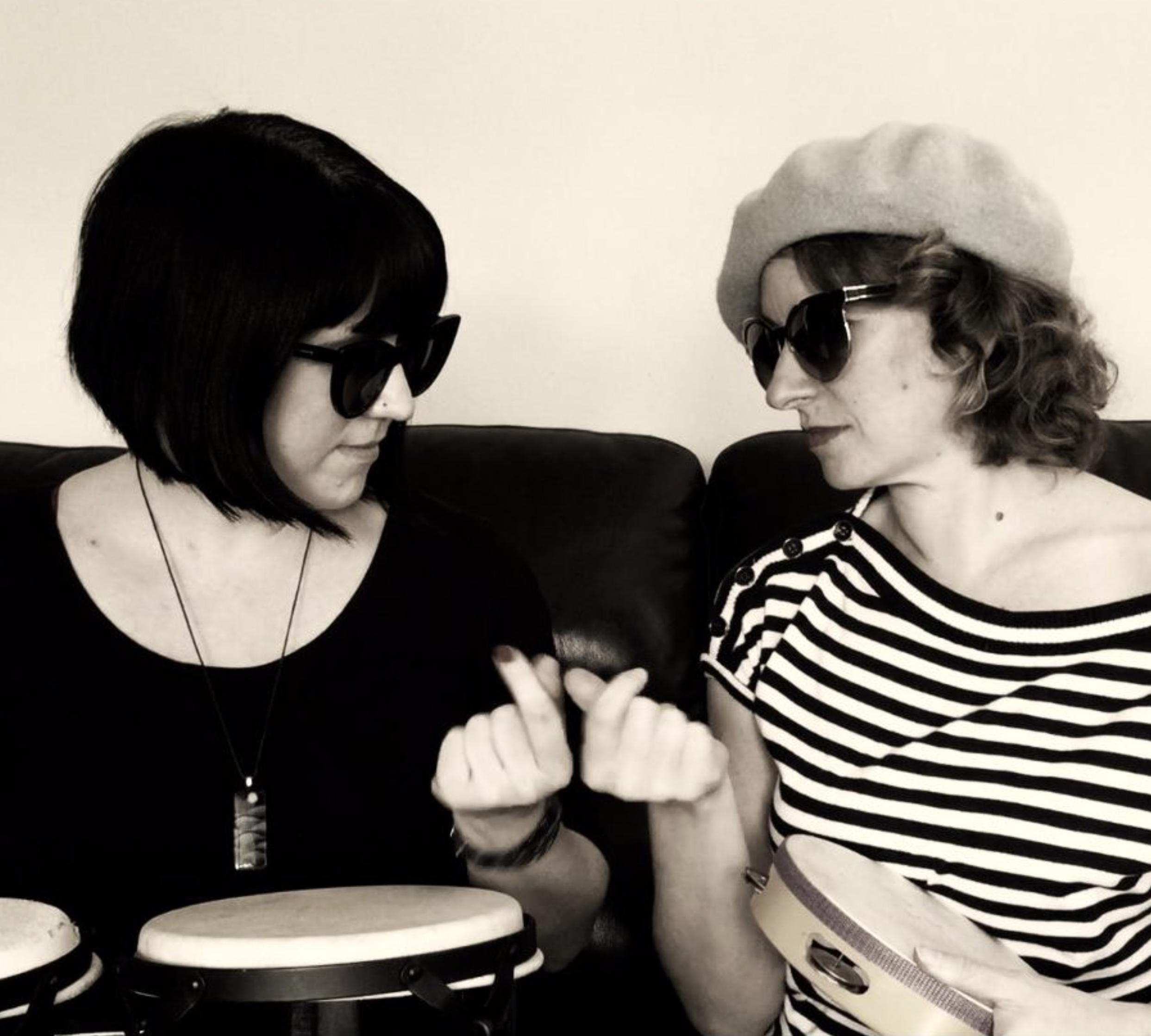
Boston residents will soon be able to visit the bohemian-themed Night Cafe, a strange, liminal space between wakefulness and dreams designed for insomniacs, featuring a groovy menu of immersive experiences curated by Kellian Adams Pletcher and Lizzie Stark. There are six “Dream Corridor” experiences, each created by a different team of designers to accommodate up to seven participants at a time. They include “a dreamy VR experience, a low-rent Carl Sagan, a nightmare about the best vacation you ever booked, a relationship nightmare,” and more. Participants in the main part of the cafe will also have the option to go on a playful adventure to score some “slumber” and some “wakefulness” from a mysterious person known only as the Sandman. Or they can just sit back and enjoy the live jazz. Just don’t forget to BYOP (bring your own pajamas).
We spoke to Kellian and Lizzie over email to find out more about The Night Cafe.
No Proscenium (NP): Can you tell us a little about yourself and your backgrounds in the immersive arts?
Lizzie Stark (LS): I live two lives. In one, I write narrative nonfiction books, including Leaving Mundania, about larp, and Pandora’s DNA, about the history and science of the BRCA genes. In the other, I design larps, interactions, and participatory theater. I’m probably best-known as one of the minds behind #Feminism, a nano-game collection, but I’ve also designed a Shakespeare edu-larp for the Kennedy Center, and worked with several museums over the years. My designs have appeared in numerous festivals, including the Future of Storytelling Summit, IndieCade, E3, Stockholm Fringe Festival, Fastaval, and more. Recent collaborations include the Otto-nominated To the Bitter End (with Bjarke Pedersen), a roleplaying game for two that follows the life cycle of a relationship, from meet-cute to wrenching break-up in about an hour; and, of course, Save the Munbax, a creature conservation puzzle play set in an immersive world of fantastic beasts, created with Kellian Adams Pletcher.
Kellian Adams Pletcher (KAP): I’m the founder and mastermind behind Green Door Labs, a studio that builds physical and digital games for museums, libraries, and more. I’ve worked in many capacities within education technology from QA and sales to production, project management, and of course, educational game design. Best known for Club Drosselmeyer, an interactive Nutcracker in swing time, I’ve also worked with a variety of organizations and nonprofits, from the National Archives and the Science Museum of London to the Girl Scouts of America. Design highlights include Come and Play at the DIA for the Detroit Institute of Arts, The League of Extraordinary Bloggers for the Boston Children’s Museum, and The Mystery of the Megatherium Club with the Smithsonian Castle.
NP: What, in a nutshell, is The Night Cafe about?
LS/KAP: The Night Cafe is a participatory theater pop-up set in the metaphysical beat cafe where insomniacs meet. It’s part playful cafe, part small-group experiences set along our Dream Corridor.
It’s a light take on the way sleeplessness can drive creativity and create space to contemplate life’s big questions.
NP: Why did you create this experience? What inspired the Night Cafe?
LS: The core concept came to me during a bout of pregnancy insomnia. I couldn’t sleep and was revisiting a favorite novel — Gabrille Burton’s Heartbreak Hotel, an experimental story about a troupe of women making the Museum of the Revolution. One of the rooms in the Museum is, of course, the waiting room, a metaphysical space people enter whenever they are waiting in line or at the doctor or whatever. That mixed in my head with the creativity, anxieties, and wonders of pregnancy insomnia. Shake them together, and you get the Night Cafe.
Naturally, I enlisted my amazing collaborator Kellian, who immediately knew this had to be set in a beat cafe and had a real vision for the environmental design and so much more. We’d also been looking for a show that answered some of the design challenges we had with Munbax, from ways to increase audience agency to designing a build that could scale to different spaces, and thus, travel. Though the seed of the idea came from my pregnancy insomnia, our designs are now so intertwined that it’s hard to know where one begins and the other ends.
NP: Why structure it as a “buffet” or “menu” of immersive experiences? What are some of the experiences someone might encounter?
LS/KAP: Part of it is sheer curiosity — no other immersive production has tried this, as far as we’ve heard, so once we had the idea we wanted to see if we could make it work.
At the same time, including small-group interactions in our show seemed like a win for everyone. Our participants get variety and the specialness of meaningful, cozy interactions. Our featured designers get exposure to new audiences and a discrete design challenge. By controlling menu size, we gain the ability to scale the show up or down. As a bonus we get to introduce amazing colleagues, old and new, to our audience.
In terms of food metaphors, think less buffet, more prix fixe. Depending on ticket type, participants will visit the Dream Corridor two or three times during The Night Cafe. Each time, they will be confronted with two potential Dreams. Luxury ticket holders will choose first, and we will place standard ticket holders into the remaining slots.
Get Kathryn Yu’s stories in your inbox
Join Medium for free to get updates from this writer.
SubscribeSubscribe
Among the Dreams our participants might encounter:
- Gentle stargazing with friends
- A bureaucratic nightmare about the best vacation you ever booked
- A psychedelic VR experience
- Poetic divinations
- An odd night at the couples’ therapist
- A physical exorcism of your wakeful anxieties
The Cafe portion of the event is also its own experience, replete with puzzles, quests, a live band and other ways of interacting with one another and the environment.
NP: How is the audience incorporated into the work? What kinds of decisions or choices can the participants make?
LS/KAP: Each Night Cafe experience will be different. Upon arrival, participants can choose one of three archetypal roles to experience the event through. And obviously, man, everyone knows that identity is fluid, so as they exhaust the possibilities of one, they can choose and add another. Inside the cafe, where to go and what to do is completely up to participants. Maybe they want to sit and listen to the band, try to score contraband slumber on the black market, or participate in some Fluxus-inspired happenings.
Along the Dream Corridor, the experiences are active. Participants will have opportunities to write, interpret, dance, and create if they choose.
NP: How are you designing around audience agency, consent, and safety?
LS/KAP: Lots of ways. On the agency side of things, we’ve designed this show so people can vote with their feet, moving to the activities that interest them inside the cafe. On the Dream Corridor, participants will have structured choices between experiences. Although here, for logistical reasons, luxury ticket holders will have more choice than standard ticket holders, we’ll try to take strong preferences into account. And of course, if you get put into a Dream Corridor experience you aren’t up for, you can always opt out of visiting the Corridor entirely.
Speaking of our opt-out mechanism…simply shade your eyes with your hand and feel free to leave any experience — whether on the Dream Corridor or otherwise — if it isn’t bringing you joy. In order to help people feel free to leave, we’ve designed dynamic systems that won’t explode if the participant count suddenly changes.
In addition, we will soon publish a menu of the Dream Corridor experiences that will give participants a taste of what each experience entails so they can make a better-informed choice about whether to participate.
NP: Who is the ideal audience member for this show?
LS/KAP: We want groovy, playful free spirits willing to put themselves out there, try new things, and dig the scene.
NP: What do you hope participants take away from the experience?
LS/KAP: We want participants to leave the show in an energized, playful mood, ready to face the world and embark on their next project.
The Night Cafe runs July 19–20 in Boston. Tickets are $40–85.
NoPro is a labor of love made possible by our generous Patreon backers: join them today!
In addition to the No Proscenium web site, our podcast, and our newsletters, you can find NoPro on Twitter, Facebook, YouTube, Instagram, in the Facebook community Everything Immersive, and on our Slack forum.
Office facilities provided by Thymele Arts, in Los Angeles, CA.




















Discussion